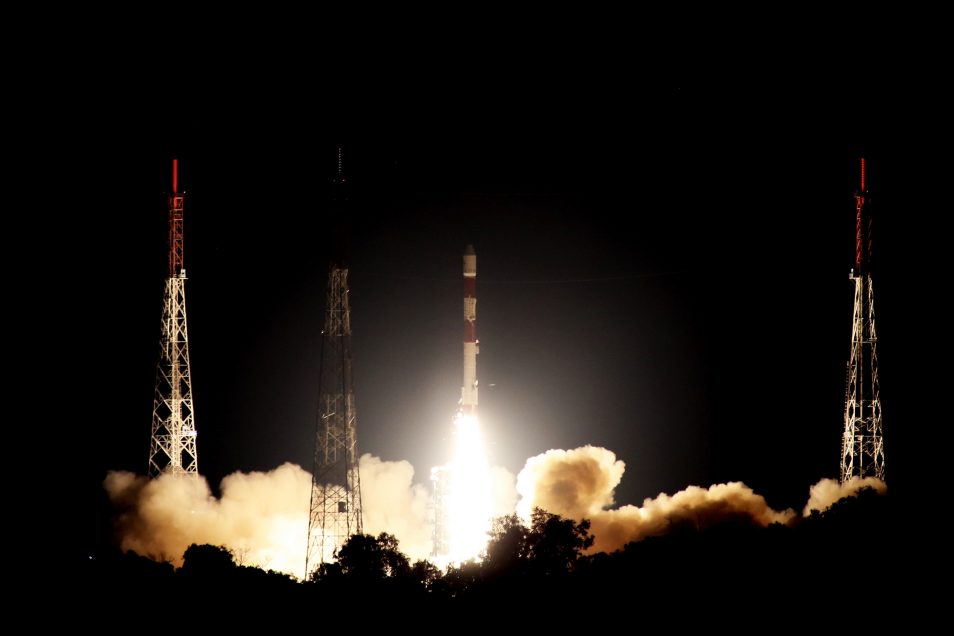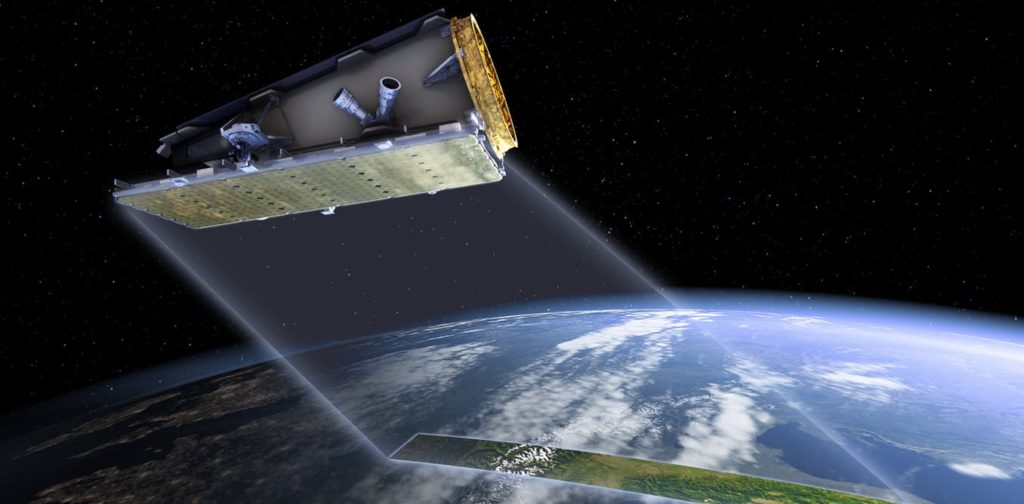
NovaSAR-1 was launched into orbit from the Satish Dhawan Space Centre in India by Antrix Corporation – the commercial arm of the Indian Space Research Organisation. Credit: ISRO/Antrix.
In the early hours of Monday 17 September, at 2.38am AEST to be exact, a powerful new recruit joined the team monitoring our planet from above. The new NovaSAR-1 satellite was delivered into orbit from the Satish Dhawan Space Centre in India by Antrix Corporation – the commercial arm of the Indian Space Research Organisation.
NovaSAR-1 carries an advanced form of radar technology known as S-band Synthetic Aperture Radar, or S-band SAR, which will provide high-resolution images of Earth from space. Not only will those images be high-resolution, the incredible tech allows the satellite to see through clouds and image the Earth night and day.
What’s in it for Australia?

CSIRO leases time from NovaSAR satellite for images of SA bushfires, floods
An artist’s impression of NovaSAR-1 over Australia. NovaSAR-1 is a collaborative mission: developed, owned and managed by Surrey Satellite Technology Ltd; Airbus provided the SAR payload; and the UK Space Agency, CSIRO and ISRO are data share partners. Credit: Surrey Satellite Technology Ltd.
Australia is one of the world’s largest users of satellite-derived data, but most of that data comes from foreign satellites. That’s why, in September 2017, we announced that we’d secured a 10 per cent share of tasking and acquisition time over the next seven years on NovaSAR-1.
Because we’ll be able to direct the satellite’s activity, it provides significant opportunities to support a wide range of existing research, further develop Australia’s Earth observation data analytics expertise, and stimulate new commercial exploitation of this data. For example, we’ll be able to collect data more quickly to assess the impact of natural disasters in Australia and the Asia Pacific region. Studies show that rapid spatial mapping of disaster areas can save up to US$0.5M to US$1M per event.
Access to the volume of data specific to Australia will also provide the raw data required to develop and model disaster and risk scenarios, including use of the technology for bushfire fuel load management, flood management, impending volcanic cloud events, earthquake prediction, pollution and oil spill monitoring.
With this improved accuracy, we can focus on analysing changes in a wide range of applications including our land and agricultural practices; land subsidence, water cycle modelling; mapping waterways, coastal habitats; geological mapping; and deforestation. We’ll also gain experience in direct ‘shutter-control’ of Earth-observing satellites.
Access to NovaSAR-1 comes at an important time in the development of the Australian space sector – which aims to triple in size to $12 billion by 2030. We’ll operate our share of satellite time as a national research facility, which will be managed by the new CSIRO Centre for Earth Observation that sits within our space research group.
Lift off!
Now that initial system checks have been completed and a successful launch has been declared, the satellite will go through a commissioning period to be managed by our partner Surrey Satellite Technology Ltd. We’re expecting to begin accepting proposals for imaging requests in December 2018.
How will NovaSAR-1 help Australian researchers?
We’ll be operating our share of NovaSAR-1 as a national facility, to enable the Australian research community to better monitor the pulse of the Earth.


Pingback: Australia stakes its claim to valuable space data with new super-satellite - Create News
22nd September 2018 at 11:16 am
How will Western Australia with 33% of the continent to manage sustainably benefit with the CSIRO Floreat Laboratories all but deserted and Landgate having departed the Leeuwin Centre for Earth Sensing Technologies. Time to reinvent these initiatives that were signed in a MOU between CSIRO and WA State Government in 1993? Time to wake up the politicians and civil servants that Business as Usual is not an option in a fast warming and in SW Australia drying world.